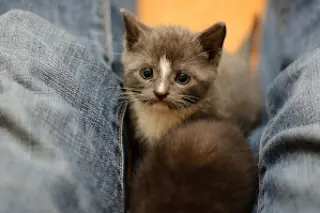We’re pretty sure this post is going to be hated by all the feline fanciers out there, but this study is just too good not to share. Here, researchers applied a test developed for use with children to investigate the relationships between cats and their humans. The SST can determine whether children, and apparently animals, view their caregivers as a source of safety in a threatening environment. It turns out that using this metric, dogs are “securely attached” to their owners, but cats are “not necessarily dependent on others to provide a sense of security and safety.” But that doesn’t mean their owners aren’t dependent on their cats for warm fuzzies in a crazy world!
Domestic Cats (Felis silvestris catus) Do Not Show Signs of Secure Attachment to Their Owners.
“The Ainsworth Strange Situation Test (SST) has been widely used to demonstrate that the bond between both children and dogs ...














